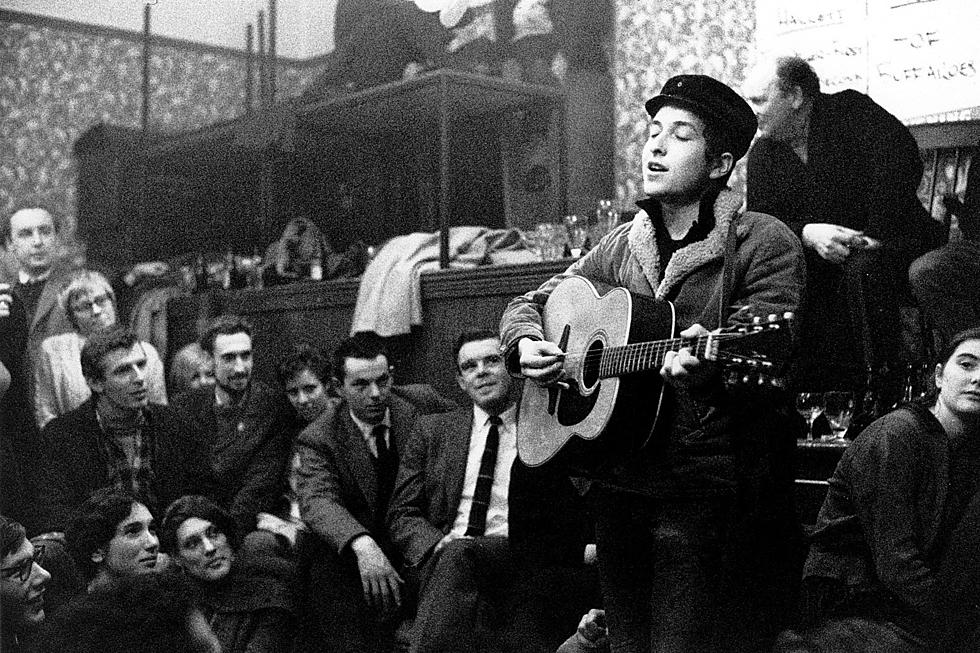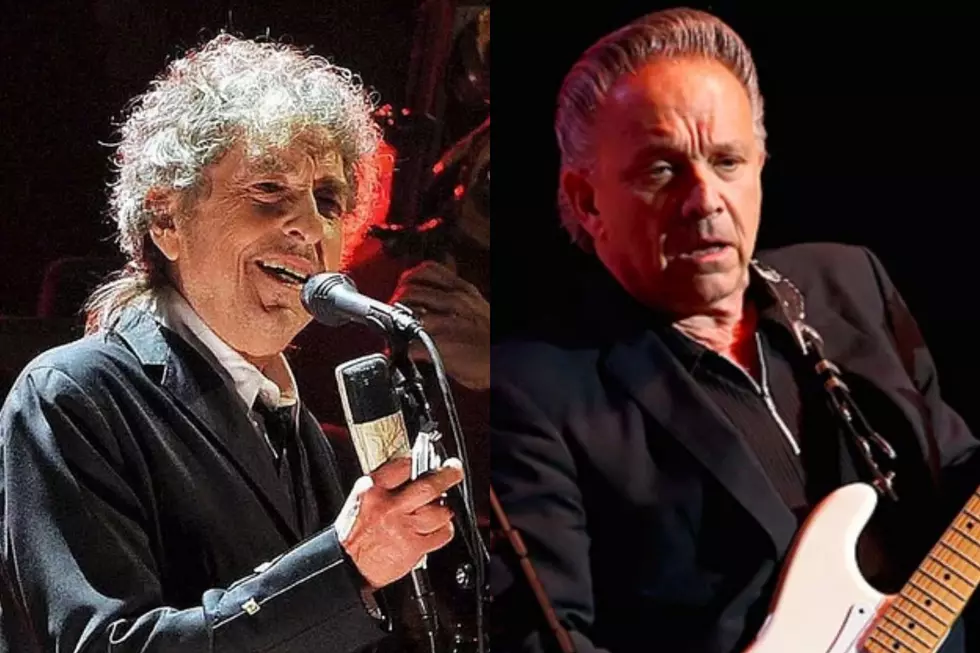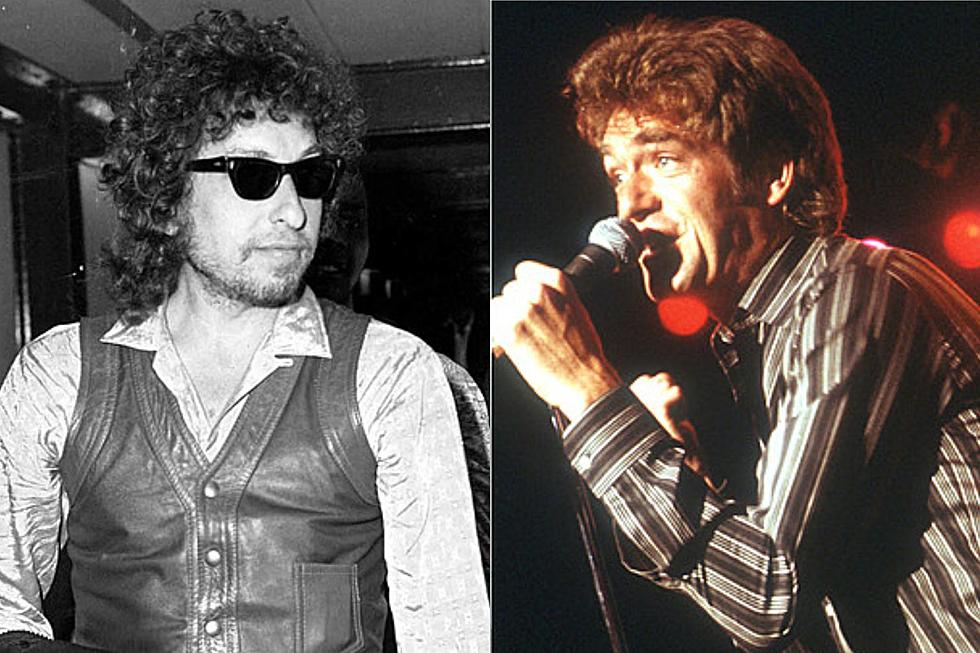
60 Years Ago: Bob Dylan Debuts ‘Blowin’ in the Wind’
Bob Dylan's foray into writing his own original music happened piece by piece.
He'd only just begun to attach the word "songwriter" to his title as a singer in March 1962, inserting two original pieces of music alongside mostly folk covers on a self-titled debut album recorded for Columbia Records over the course of six swift hours.
But Dylan's physical and emotional momentum in the early '60s met the sweeping pace of New York City, a haven for blossoming musicians and artists of varying mediums. The results were both a blessing and a curse as Dylan considered what role original work might play in his up-and-coming career.
"I did everything fast: Thought fast, ate fast, talked fast and walked fast," he wrote in his 2004 memoir, Chronicles Volume One. "I even sang my songs fast. I needed to slow my mind down if I was going to be a composer with anything to say."
By the time Bob Dylan was released, he'd begun to more seriously consider ideas and themes that might make for good songwriting material, spending a significant amount of time reading old books and newspapers in the public library and at friends apartments. Writings from the Civil War period, with their "language and rhetoric," interested Dylan in particular. That prompted him to draw parallels between their world and his own.
"The age that I was living in didn't resemble this age, but yet it did in some mysterious and traditional way. Not just a little bit, but a lot," he wrote. "There was a broad spectrum and commonwealth that I was living upon, and the basic psychology of that life was every bit a part of it. If you turned the light towards it, you could see the full complexity of human nature. Back there, America was put on the cross, died and resurrected. There was nothing synthetic about it. The godawful truth of that would be the all-encompassing template behind everything I would write."
Dylan was also fascinated with slavery and Reconstruction era songs like "No More Auction Block," first published in 1867 in Slave Songs of the United States. He sometimes heard it performed by the New World singers, a folk revival group that played the local clubs in New York.
"He really liked Delores Dixon, our lead singer, who is a Black, sort of gospel-oriented, wonderful singer from Queens. She has a great voice," the band's guitarist, Happy Traum, told Bedford and Bowery in 2017. "And Bob was originally a really good friend of Gil Turner’s, who was the de facto leader of the group."
Listen to Bob Dylan Perform 'No More Auction Block'
Dylan performed the song himself, as well. A recording of one of these performances from the Gaslight Cafe would appear on Dylan's The Bootleg Series Volumes 1–3 (Rare & Unreleased) 1961–1991. Famed folk singer and civil rights activist Odetta also release her own version in 1973.
In Chronicles, Dylan revealed that "No More Auction Block" served as the musical inspiration for what would become, arguably, one of his most well-known compositions. In fact, "Blowin' in the Wind" used several of the same chords and a similar vocal phrasing.
Fellow singer-songwriter David Blue, another regular around the Village, was with Dylan one afternoon when he began dashing off lyrics.
"Dylan and I had been killing the latter part of a Monday afternoon drinking coffee," Blue recalled for Hoot!: A Twenty-Five Year History of the Greenwich Village Music Scene. "About five o'clock, Dylan pulled out his guitar and a paper and pencil. He began to strum some chords and fool with some lines he had written for a new song. Time passed and he asked me to play the guitar for him so he could figure out the rhymes with greater ease. We did this for an hour or so until he was satisfied. The song was 'Blowin' in the Wind.'"
Dylan took the tune to the basement of Gerde's Folk City and played it for Turner. "Bob sang it out with great passion," Blue remembered. "When he finished, there was silence all around. Gil Turner was stunned."
Turner wanted to perform the song and asked Dylan to teach him the chords and words, which was then only a few verses. The audience adored it. "Bob was leaning against the bar near the back, smiling and laughing," Blue said. The date was April 16, 1962.
Of course, no one could guess that "Blowin' in the Wind" would grow to epic, national proportions – least of all Dylan himself.
"I didn't really know if that song was good or bad. It just felt right," Dylan said in Martin Scorsese's 2005 film, No Direction Home: Bob Dylan "I needed to sing it in that language, which is a language that I hadn't heard before, but I didn't really know if it had any anthemic quality or anything."
Watch Bob Dylan Perform 'Blowin' in the Wind'
Besides, at that point, the term "protest singer" hadn't yet reached colloquial status.
"You were a performer or you weren't, that was about it — a folksinger or not one 'Songs of dissent' was a term people used but even that was rare," Dylan wrote. "I didn't think I was protesting anything any more than I thought Woody Guthrie songs were protesting anything."
"Blowin' in the Wind," both the lyrics and sheet music, first appeared in the May 1962 issue of Broadside Magazine, a small mimeographed publication founded by Agnes “Sis” Cunningham and her husband, Gordon Friesen, whose aim was to publish "topical" songs. Pete Seeger served as an advisory figure to Broadside.
"Many people throughout the country today are writing topical songs," according to a statement on the front page of the magazine's first issue, "and the only way to find out if a song is good is to give it wide circulation and let the singers and listeners decide for themselves."
Beneath Dylan's song were a few notes about the songwriter: "Only 20 years old, some consider him to be the nearest composer we have had to Woody Guthrie in recent years."
"Blowin' in the Wind," though recorded in July 1962, would not appear in any official capacity until The Freewheelin' Bob Dylan in May 1963, but it picked up press and local attention along the way.
"There ain't too much I can say about this song except that the answer is blowing in the wind. It ain't in no book or movie or TV show or discussion group. Man, it's in the wind — and it's blowing in the wind." he said to Sing Out! magazine in June of 1962, as recounted in The Bob Dylan Encyclopedia.
"Too many of these hip people are telling me where the answer is but oh I won't believe that," Dylan added. "I still say that some of the biggest criminals are those that turn their heads away when they see wrong and know it's wrong. I'm only 21 years old and I know that there's been too many wars ... You people over 21, you're older and smarter."
Bob Dylan 'Bootleg Series' Albums
Why Don't More People Like This Bob Dylan Album?
More From Ultimate Classic Rock









